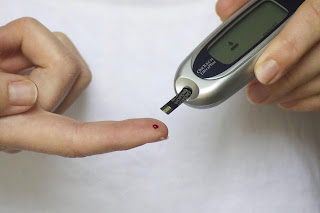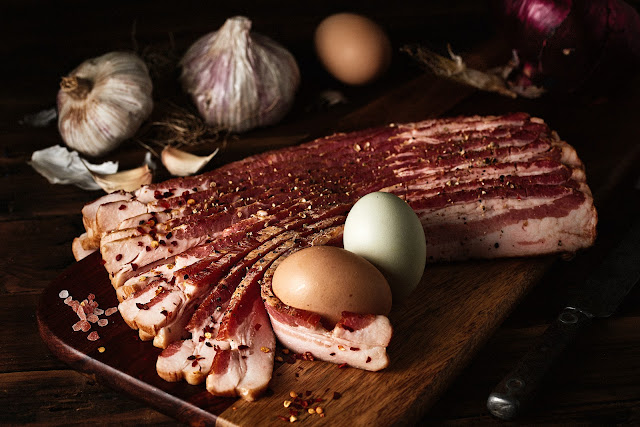What Are The Best Foods For People With Diabetes, And What Should Be Avoided?
Diabetes is a metabolic disorder characterized by elevated blood sugar levels. Insulin transports sugar from the bloodstream into your cells, where it is stored or utilized for energy. Your body either doesn't generate enough insulin or can't utilize the insulin it does make efficiently if you have diabetes.
Blood sugar levels that are too high harm organs and tissues all throughout the body. The longer you live with high blood sugar, the more likely you are to have issues.
That's why it is very important to live a healthy life with balanced blood sugar levels to increase your life expectancy. In diabetes avoiding the wrong food is as much important as eating the right one.
Here is the list of all the food you should avoid for a diabetic person By Mohit Bansal Chandigarh-
Sugar
It is obvious that sugar is going to top the list of food items or ingredients a diabetic person should avoid. Low-quality carbs are foods comprised mostly of processed sugar, such as many sweets, candy, and soda. These meals are not only nutritionally deficient, but they can also induce a rapid rise in blood sugar. They can also contribute to weight gain. Blood sugar levels are raised by refined carbs. To lower your blood sugar, your body generates more insulin. Insulin is a hormone that promotes fat accumulation. Your body transforms carbs into fat and stores it on your buttocks, thighs, tummy, and hips when there is more circulating insulin in your circulation system.
Fruit juice
Fruit juice, on the other hand, is a different story. While fiber-rich whole fruits are considered good carbs but for those with diabetes, fruit juice is not. Juice, including 100% fruit juice, should be avoided by those with diabetes. Fruit juice has more vitamins and minerals than soda and other sugary beverages, but juices contain concentrated levels of fruit sugar, which causes your blood sugar to jump fast. Plus, because juice lacks the fiber present in whole fruit, it does not fill you full the same way that eating a piece of fruit does.
White bread
White sandwich bread is not a whole grain, but rather a refined grain. It has a high glycemic index when consumed alone, which can cause blood sugar levels to spike. Substitute whole-grain or multi-grain bread for white bread.
Trans fat
Artificial trans fats, according to research, are absolutely harmful. Unsaturated fatty acids are stabilized by the addition of hydrogen. As a result, the process of creation begins. Creamers, margarine, spreads, peanut butter, muffins, and other bakery foods all include it. Trans fats, in particular, prolong the shelf life of foods. It's connected to insulin resistance, inflammation, and heart issues, as well as a drop in good cholesterol and a deterioration of vascular function. If you notice a product labeled "Partially hydrogenated," stay away from it.
Packaged food
Because refined flour is the major ingredient in packaged snacks, they are not nutritious foods. Furthermore, the presence of quick-digesting carbohydrates raises blood sugar levels quickly. Between hunger sensations, it's best to consume almonds or low-carb veggies to keep diabetes under control.
Dried fruits
Dried fruits, as we all know, contain a wealth of vitamins, minerals, and micronutrients. When you 'dry' fruits, water evaporates, resulting in higher quantities of certain nutrients. Sugar levels are also becoming more concentrated at the same time. When it comes to raisins, have four times the amount of carbohydrates as grapes. As a result, dried fruits have a higher carb content than fresh fruits. Nobody says diabetics can't consume fruits, but they should limit themselves to low-sugar varieties.
7. Full fat diary
You've undoubtedly heard that saturated fats found in dairy products can elevate your LDL cholesterol and put you at risk for heart disease. Saturated fats, on the other hand, may present still another severe concern for diabetics: evidence suggests that eating a high-saturated-fat diet might increase insulin resistance. Full-fat dairy products manufactured with whole milk, such as cream, full-fat yogurt, ice cream, cream cheese, and other full-fat cheeses, should be avoided as much as possible.
8. Fatty cut meats
High-fat cuts of meat, such as ordinary ground beef, bologna, hot dogs, sausage, bacon, and ribs, should be limited or avoided by people with type 2 diabetes since, like full-fat dairy, they're high in saturated fats.
9. Fried food
You may have a fondness for fried foods such as french fries, fried chicken, and potato chips, but in the long term, fulfilling this demand in a healthier way will be better for your health. Fried meals absorb a lot of oil, which means they have a lot of extra calories — and many of them are breaded first, which increases the calories even more. Overdoing oily foods can lead to weight gain and blood sugar imbalances.
10. Alcohol
Before you have a cocktail or simply a glass of wine with dinner, see your doctor to ensure if drinking alcohol is safe for you, as it might affect your blood sugar levels. If you do decide to drink, do so in moderation. Alcohol and diabetes medications are both metabolized by the liver. For your liver, this may be too much. Low blood sugar can occur if you're on insulin, especially if you're drinking and not eating.
These were the food items which you need to avoid or have in moderation. Now lets move ahead and know what food items you need to have to maintain your health.
Cinnamon or dal-chini
This aromatic spice has been demonstrated to decrease cholesterol and stabilize blood sugar levels. In one research published in the journal Diabetes Care, just 1/4 teaspoon of cinnamon per day lowered fasting blood sugar and cholesterol levels, and other studies have found comparable results. Sprinkle cinnamon onto smoothies, yoghurt, porridge, or even coffee to get your cinnamon dose. Cinnamon has another advantage. It enhances the flavour of your cuisine without the use of sugar or salt.
Walnuts
Walnuts, in particular, have been demonstrated to aid in the prevention of heart disease and to improve blood sugar levels, due to their high polyunsaturated fat content. These good fats have been demonstrated to help prevent and delay the onset of diseases like diabetes and heart disease. These healthy fats can also be found in almonds, pistachios, and pecans. Nuts are abundant in protein and fat and low in carbs, making them ideal for blood sugar control. Just keep an eye on the serving size. A quarter-cup of shelled walnuts contains 164 calories.
Oats
Whole grains, such as oats, are better for your blood sugar (fiber helps prevent spikes) and may even enhance insulin sensitivity. Beta-glucans, which are soluble fibers that cause oats to bulk up in liquid, are present in oats. Soluble fiber helps to control blood sugar levels by reducing the digestion and absorption of carbs in other meals. Oats have also been demonstrated to help lower blood pressure, cholesterol, and fasting insulin levels in studies.
Beans
Beans are high in fiber and protein, so they will keep you satisfied for a long time. Beans are also a carbohydrate source, with roughly 20 grams per half-cup meal. People who added a cup or more of beans to their meals on a daily basis had improved blood sugar management and reduced blood pressure. Beans are a low-cost food that may be used in a variety of ways. Add several types of beans to veggie-packed salads and soups, such as black, pinto, garbanzo, or cannellini beans.
Broccoli
Sulforaphane is a compound found in broccoli and other green vegetables including kale, cauliflower, and Brussels sprouts. This anti-inflammatory chemical aids in blood sugar regulation and protects blood vessels from diabetes-related damage. Broccoli is low in calories and carbohydrates, with only 55 calories and 11 grams of carbohydrates per cup of cooked chopped florets, but it's also high in minerals like vitamin C and iron. Feel free to use half of your plate to serve this nutritious green vegetable.
Quinoa
This protein-rich whole grain can be used in place of white pasta or rice. Per 1/2-cup serving of cooked quinoa, there are 3 grams of fiber and 4 grams of protein. Quinoa's high fiber and protein content slow digestion, keeping you full and preventing blood sugar spikes. Quinoa is also regarded as a complete protein since it includes all nine necessary amino acids required for muscle growth, which is uncommon among plant-based proteins. It's also high in minerals like iron and magnesium.
Spinach
Spinach is a good source of magnesium, which helps your body use insulin to absorb carbohydrates in your blood and better maintain blood sugar levels. Vitamin K and folate, among other minerals, are abundant in this leafy green. Furthermore, a 2-cup portion of raw spinach has just 14 calories and 2 grams of carbs. Fresh baby spinach can be eaten raw in salads, added to a morning smoothie, or sautéed with garlic and olive oil for a nutritious side dish.
These were some of the food items which you should definitely have in your diet when you are diagnosed with diabetes By Mohit Bansal Chandigarh.




Comments
Post a Comment